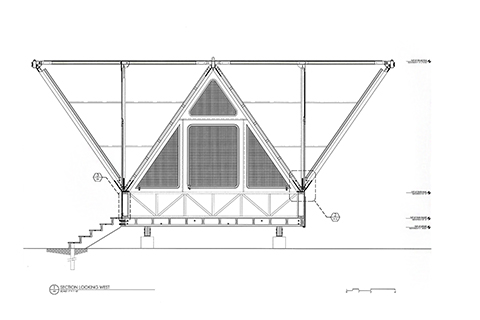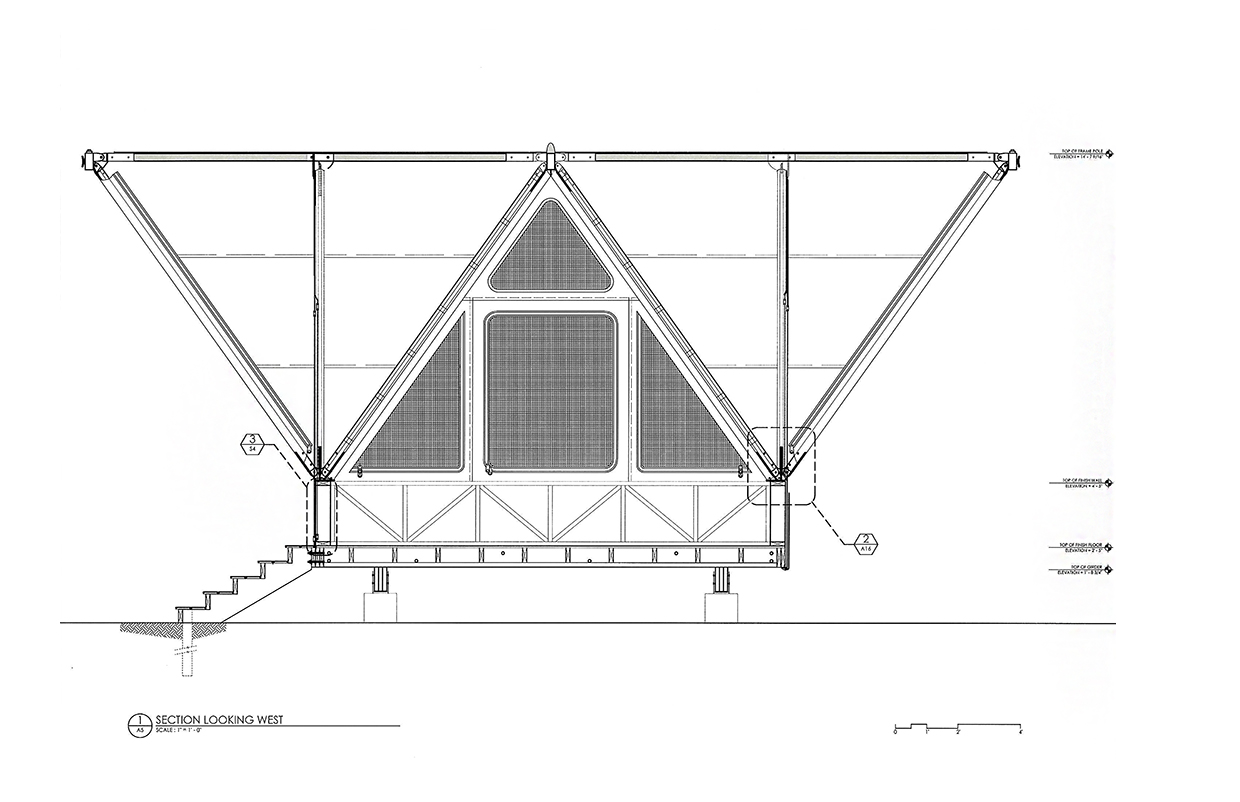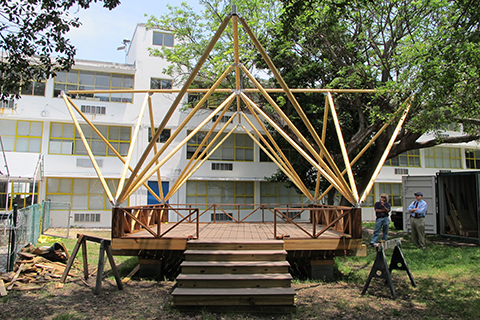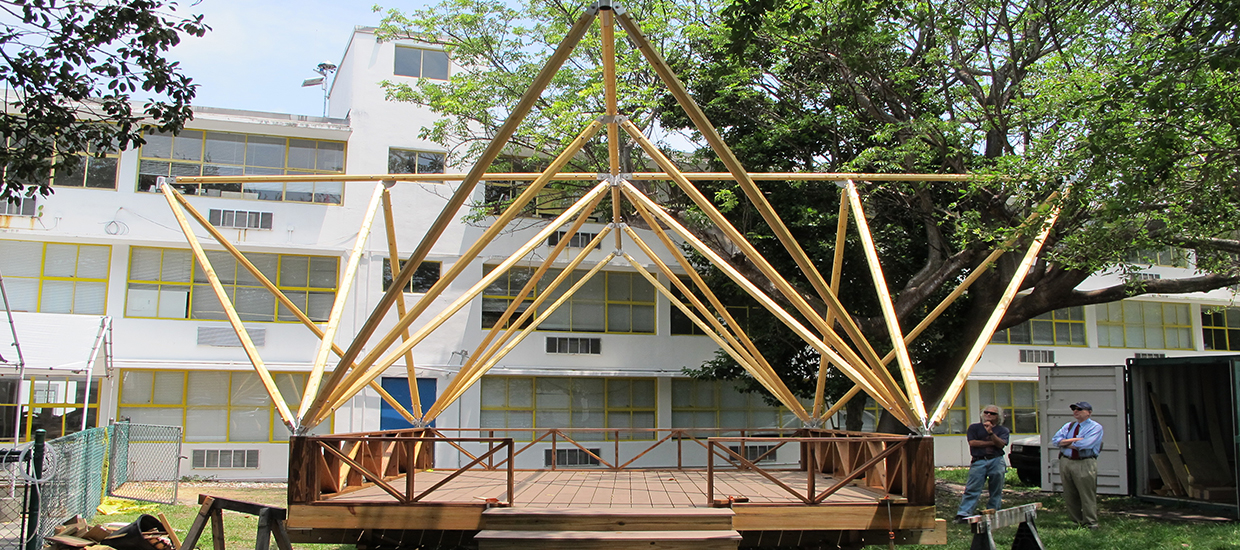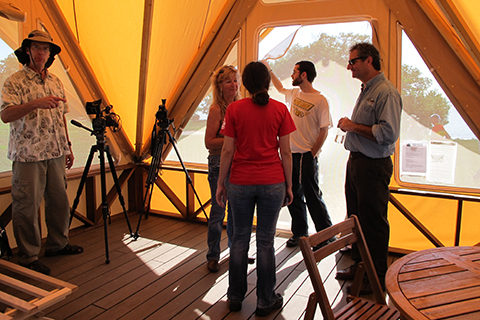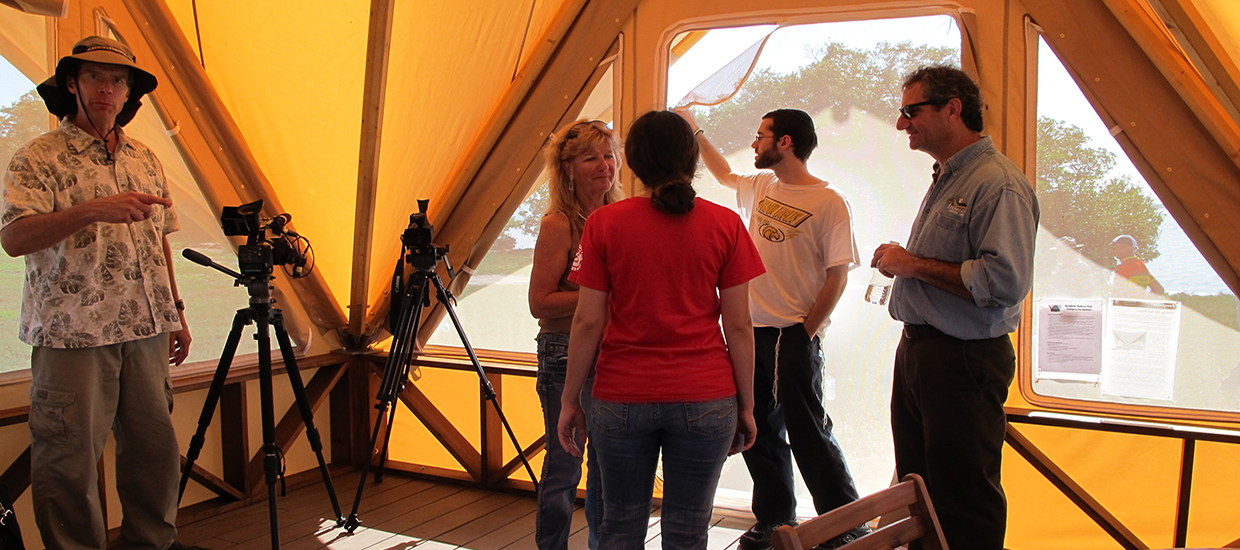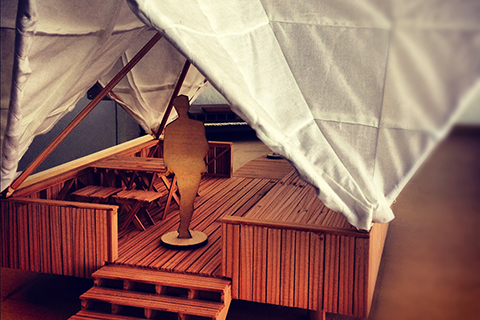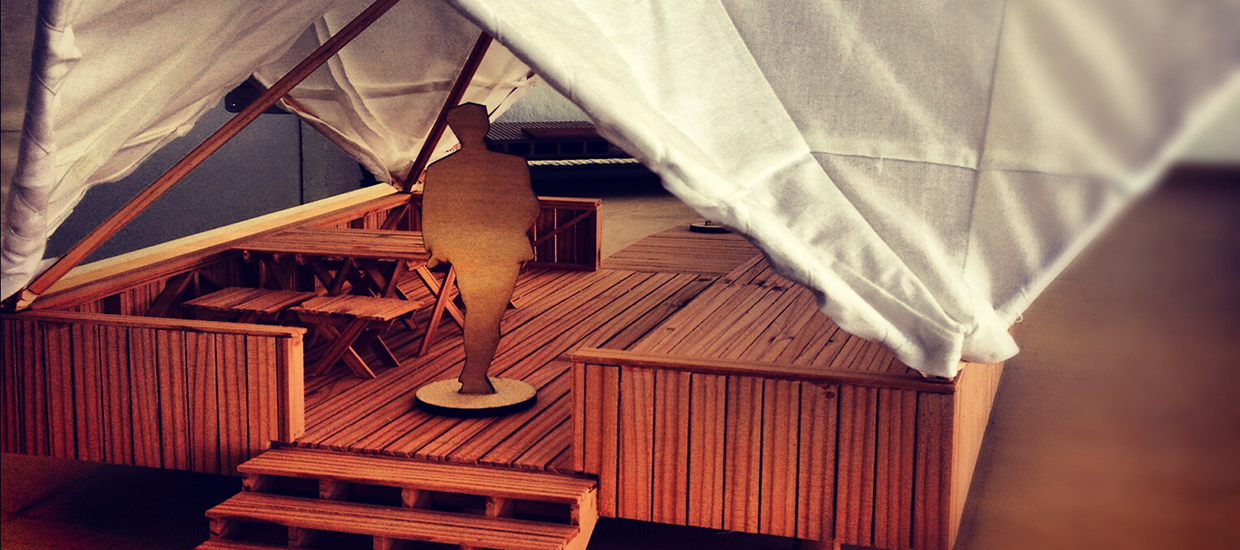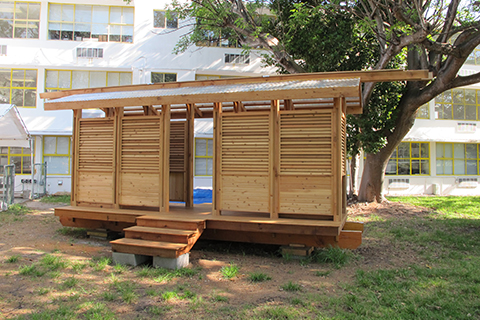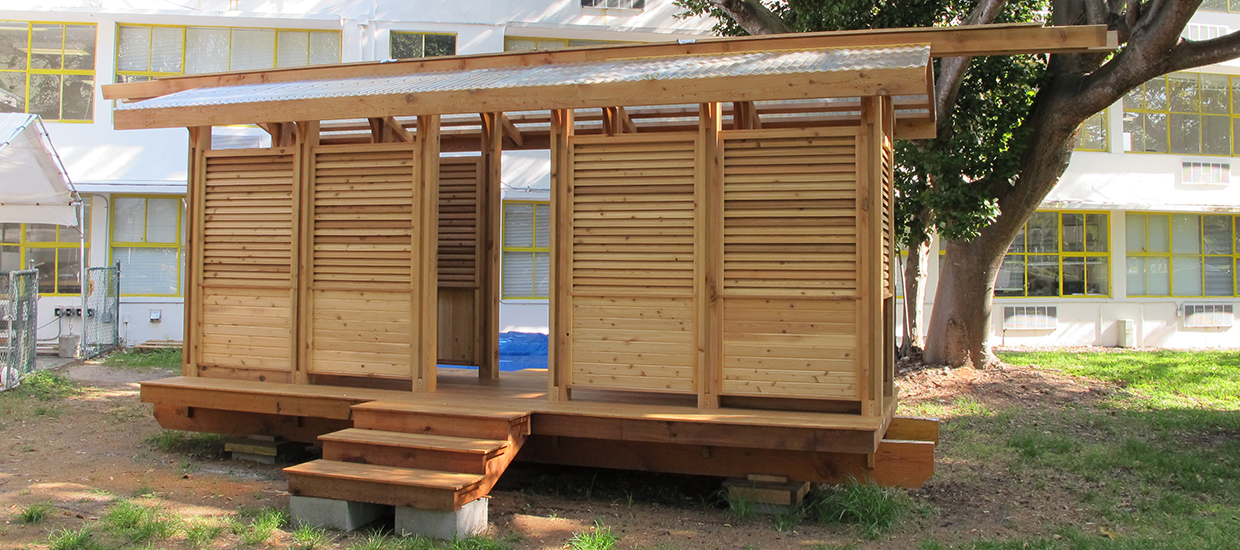One of the biggest challenges was to design the Eco-Tent as a seasonal structure that could be taken down during the hurricane season when mosquitoes and inclement weather make the site mostly uninhabitable. The project needed to be able to be deployed by park staff and taken down within a few hours in order to be a practical solution.
The South Florida National Parks Trust and Everglades National Park provided support and funding for this project. The concerns intrinsic to the project challenged the Design/Build Studio to design for, and in, a remote and unforgiving location with unique site demands. Design tolerances needed to be exact to address environmental factors including high winds, flood waters, and clouds of mosquitoes. One detail developed with the advice of NPS staff was the stringing of monofilament between the finials to keep turkey buzzards and other birds from perching on the tent ridge poles.
While the project was immensely popular - its first season (rented every day for eight months) - some poorly functioning zippers and pesky mosquitoes rendered the design in need of better bug control with tent ingress and egress. The National Park Service ultimately intends to lease the site to an outside vendor to build thirty more Eco-Tents and with Design/Build Studio assistance, address the bug control and ingress/egress conditions.
The commitment to modularity is fundamental to this process of design which requires being able to assemble and take apart what we conceive in our heads, on our drawing boards, and in this case, the building itself. It is a building that encourages nomadic work and is connected to the architecture of the region which ranges from the Seminole “Chickee” to the railroad camp structures of Henry Flagler, all of which were meant to be seasonal, or occupied for a specific time period.
Client: Everglades National Park at Flamingo
Students: Violet Battat, Giancarlo Belledonne, Michael Galea, Carlo Guzman De Jesus, Luan Hao, Glenn Laaspere, Ruslana Makarenko, Catherine O’Sullivan, Kelly Sawyna, Megan Sippel, Sam Vana
Faculty: Jim Adamson, Rocco Ceo



